Strength training is a very diverse activity. Not only are there several different strength sports, but people also work out for a range of different reasons. Some want to get as strong as possible, while others want to lose weight or build muscle.
Unsurprisingly, that means there are lots of different training styles. That’s because of the unbendable fitness principle of specificity.
The fitness principle of specificity states that you are fit for what you do. If you lift heavy weights, you’ll get stronger, and if you run a long way, you’ll get better at long-distance running. Subsequently, if you want to achieve a specific fitness goal, such as muscle hypertrophy, there is a way to train that will produce the best possible results.
That said, within the framework of any training program, there is usually at least a little space for individualization. For example, you could build muscle training twice a week, or six times or more. You could do one set per exercise (HIT-style training) or five sets. You could focus on compound exercises or do more isolation moves.
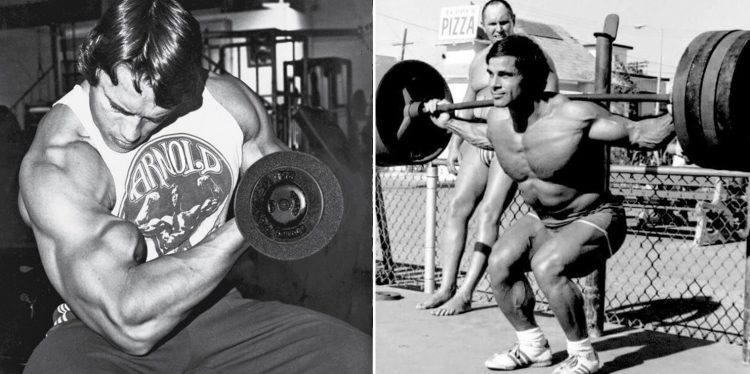

Bio-individuality means that people often respond differently to training stimuli, and what works well for one person may not be optimal for others. This is perfectly illustrated by the workouts of pro bodybuilders. They’ve “cracked the code” of what works best for them. If one workout worked for everyone, all top bodybuilders would train the same way. That’s clearly not the case.
One significant variable that you can modify is the number of exercises you do per muscle group.
Like many aspects of training, there is no single perfect prescription for how many exercises you should do per muscle group. In many cases, the number of exercises is determined by things like how much time you have to train, your experience, and why you are working out in the first place.
So, in this article, instead of telling you how many exercises you should do per muscle group, we’re going to explore the options so you can make that decision for yourself.
One Exercise Per Muscle Group
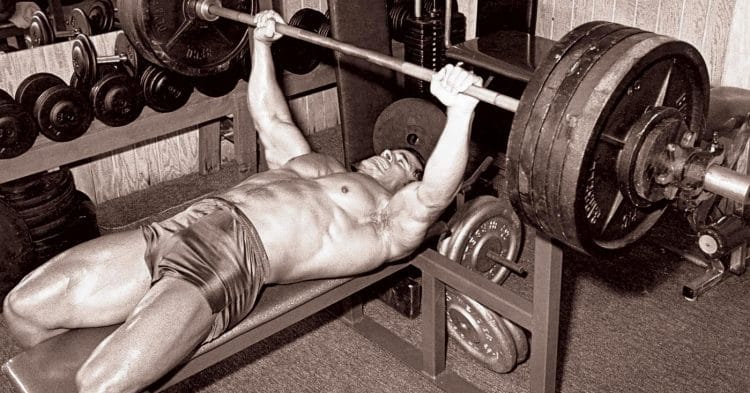

If you are following a full-body routine like Arnold Schwarzenegger’s Golden Six, you’ll be limited to just one exercise per muscle group. The same is true for the one lift a day (OLAD) program. Beginners often do very well using just one exercise per body part.
Choosing just one exercise isn’t always easy, but in most cases, you’ll get superior results from compound exercises. This will provide you with the biggest bang for your workout buck. Compound exercises involve two or more joints and several muscles working simultaneously. They’re an efficient use of your time and energy.
Doing just one exercise per muscle group can build muscle strength or size, providing you choose the appropriate load and repetition range. However, more advanced exercisers may get better results from a workout with more volume and variation. That said, if you are short on time, doing a single exercise per muscle group could still be a very good option.
Consider these short but effective workouts. Each one contains just three exercises but, between them and over the course of one week, train all your major muscle groups:
| Workout 1 | Workout 2 |
| Squats | Deadlifts |
| Shoulder press | Bench press |
| Bent-over rows | Pull-ups |
Such an abbreviated training program won’t be ideal for everyone. But, if you want to train and don’t have time to work out longer or more often, it could help maintain your progress until you are able to return to a more frequent workout plan.
Focusing on just one exercise per muscle group is also an excellent way to improve your technical mastery. If you want to be a better deadlifter, doing nothing but deadlifts for your posterior chain means you’ll have ample time to practice it.
The obvious downside of doing just one exercise per muscle group is that you can only hit that muscle from one angle. This may affect your potential for hypertrophy. You may also need to do more sets to accumulate the training volume necessary for optimal muscle growth.
Two Exercises Per Muscle Group
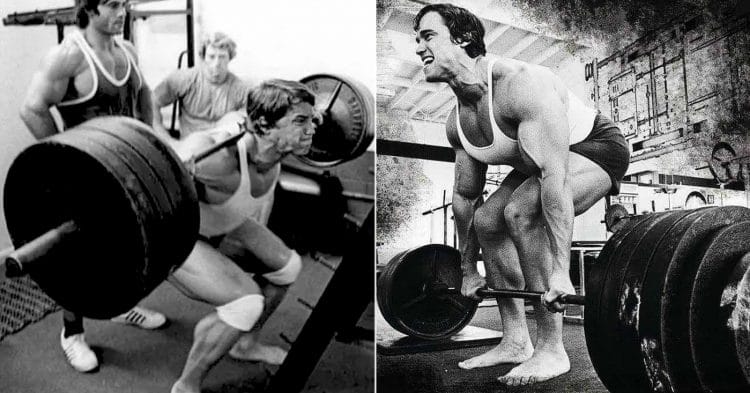

Doing two exercises per muscle group opens up some potentially beneficial training options. It means you can do:
- A primary and a secondary compound exercise per muscle group, e.g., Squat and leg press
- One compound and one isolation exercise per muscle group, e.g., bench press and dumbbell flys
- Train multiple functions of the same muscle, e.g., lat pulldowns (shoulder adduction) and seated rows (shoulder extensions) for the latissimus dorsi (1)
- Increase volume for hypertrophy purposes, e.g., barbell biceps curls and dumbbell biceps concentration curls
- Do the first exercise for lower reps using heavy weights (strength) and the second exercise with a moderate weight for higher reps (hypertrophy)
Even if you have time for two exercises per muscle group, you should still put most of your energy into the first exercise as that’s the one that will deliver the majority of your gains, be that strength or hypertrophy. Think of the second exercise as a bonus; it’s beneficial but not essential for your progress.
Three Exercises per Muscle Group


Three exercises per muscle group mean you can train large muscle groups like your chest, back, and legs from multiple angles for optimal development.
For example, for your pectoralis major, you could do something like:
- Flat bench press (general pecs)
- Incline dumbbell press (upper pecs)
- Dips (lower pecs)
Or you could use more isolation exercises to ensure that the individual muscle groups that make up a body part are fully stimulated:
- Squats (general legs)
- Leg extensions (quadriceps)
- Leg curls (hamstrings)
You could also use multiple training tools to make your workouts more interesting:
- Barbell deadlifts
- Bodyweight pull-ups
- Cable seated rows
Doing three exercises also means you can accumulate a lot of training volume without doing lots of sets of the same exercise, which could prove boring for some exercisers.
Small muscle groups like the calves probably won’t benefit from so many different exercises. Still, three exercises could be beneficial for larger muscle groups, especially if your primary training goal is hypertrophy.
Four Exercises per Muscle Group
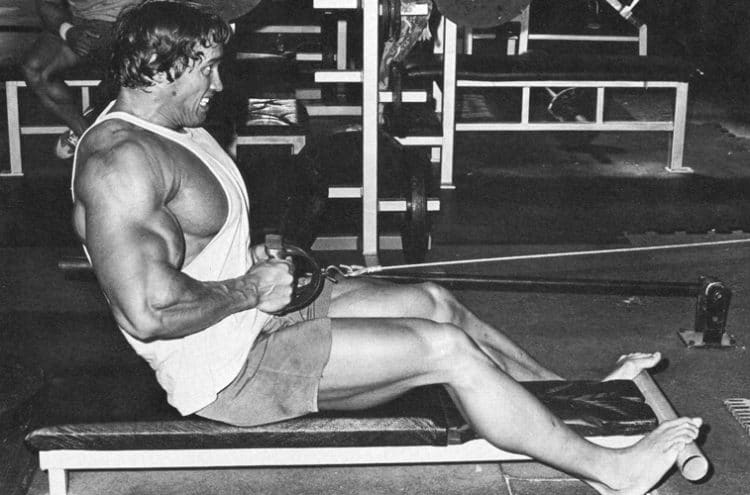

If you are following something like a five-day split and train just one muscle group per workout, you may want to do four exercises per muscle group. This will ensure you train it from all available angles while accumulating plenty of muscle-building volume. Such an approach means you don’t have to be so picky with your exercise choices – you’ll probably get decent results simply because of the amount of work you do per workout.
The main disadvantage of such a voluminous approach is that there are bound to be similar movements that create a degree of redundancy.
For example:
- Pull-ups
- Pulldowns
- Bent-over rows
- Single-arm rows
Although this workout involves four different back exercises, there are two shoulder adduction exercises (pull-ups and lat pulldowns) and two shoulder extension exercises (bent-over rows and single-arm rows). This may be unnecessary and simply means some of your training time is wasted on doing very similar movements.
Five or More Exercises Per Muscle Group
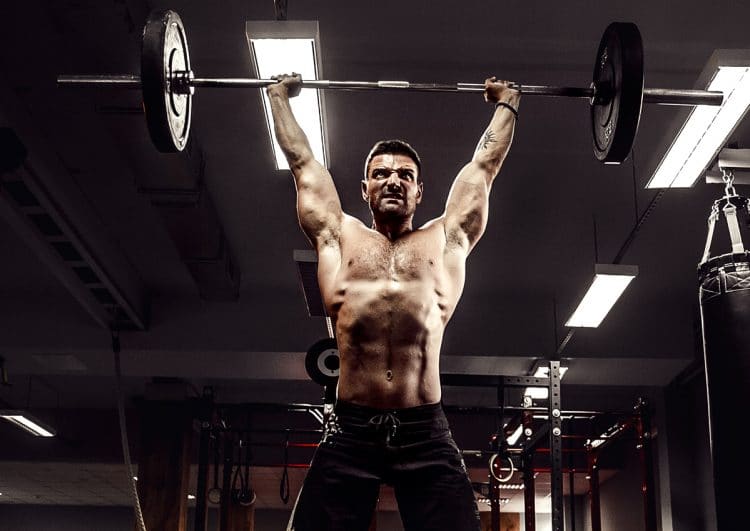

Not a lot of lifters need to do more than five exercises per muscle group. Even if you limit yourself to three sets per exercise, five exercises mean doing 15 sets for the same muscle. Bear in mind that more volume doesn’t automatically produce better results; there is a point of diminishing returns.
Doing five exercises per muscle group means there will definitely be some overlaps. You might switch between barbell, dumbbell, body weight, and machine exercises, but at least some of the movements are bound to be similar.
That doesn’t mean you CAN’T do five exercises per muscle group. But, if you choose to follow such a voluminous training program, you’ll have to accept that at least some of your training time and energy could be wasted on redundant exercises.
The main exception to this rule is what is often called the kitchen sink approach to training. This refers to doing just one or two sets of a long list of exercises for the same muscle group. This approach ensures that volume remains in the realms of sensibility, but you can still enjoy doing lots of different exercises per workout. This is a useful approach for anyone who gets bored easily.
For example, do one set only of the following exercises:
- Squat
- Leg press
- Hack squat
- Leg press
- Leg extension
- Leg curl
- Bulgarian split squat
- Romanian deadlifts
- Hip thrust
- Walking lunges
General Considerations:
How Many Exercises Per Muscle Group?
Consider the following when deciding on how many exercises to do per muscle group:
- Large muscle groups can benefit from more exercises. They often have multiple functions, and it may help to train those functions using several different exercises.
- More exercises usually mean fewer sets. If you are doing just 1-2 exercises, you might do 4-6 sets for each one. But, if you’re doing five exercises, you may only have the time and energy for 2-3. The total training volume could actually end up being very similar.
- You don’t have to do the same number of exercises for every muscle group. A large complex muscle group like your legs may need four exercises to develop optimally. Whereas you might only need two exercises for your biceps. You might also choose to do more exercises for lagging muscle groups and fewer sets if you merely want to maintain.
- Beginners often get great results from relatively few exercises per muscle group. That’s because they have a low tolerance for training stress, and even one exercise will provide the stimulus they need. As they get fitter and stronger, exercise tolerance improves, and they will probably need more exercises per muscle group to maintain their progress.
- Avoid redundancies as there is no real benefit to doing the same movement over and over again using different training equipment, such as standing, seated, and lying leg curls. Despite the changes in position/machine, the movement is all but identical. If you do multiple exercises per muscle group, try and choose different movements and angles rather than repeating yourself.
- There is no optimal number of exercises per muscle group. One can get the job done, but you may benefit from two, four, or even more. Try to determine the lowest number of exercises you need to get the results you want. That way, you can add more as you get fitter and stronger.
- The more often you train a muscle group per week, the fewer exercises you need to do as volume is accumulated throughout your training week. For example, if you train your chest three times a week, 1-2 exercises are probably all you need. But, if you only train your chest once a week, more exercises would be appropriate.
Wrapping Up
Ultimately, the number of exercises you should do per muscle group depends on several factors, including your training age, how often you train, your goals, and how long you have for your workouts. There is no one-size-fits-all recommendation. Anywhere from one to five or more exercises per body part can work; it all depends on what you need.
Experiment and find your ideal training volume. It may be lower than you think! Remember, too, that doing more exercises may not produce better results, and doing more than you need could just delay your rest and recovery.
Spend your workout time and energy wisely, and don’t waste it on unnecessary exercises if you don’t have to.
References:
1. PubMed: Variations in muscle activation levels during traditional latissimus dorsi weight training exercises: An experimental study https://www.ncbi.nlm.nih.gov/pmc/articles/PMC449729/

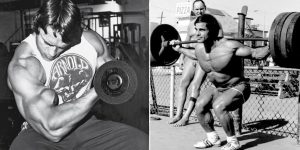
[…] If you are looking to build strength in the hams and glutes, you should consider adding other movements into your routine that work these particular muscle groups. […]